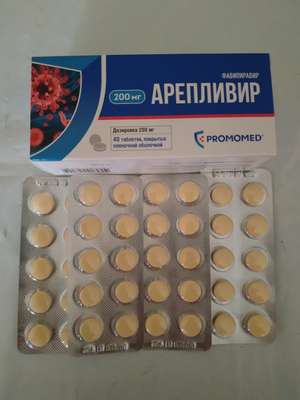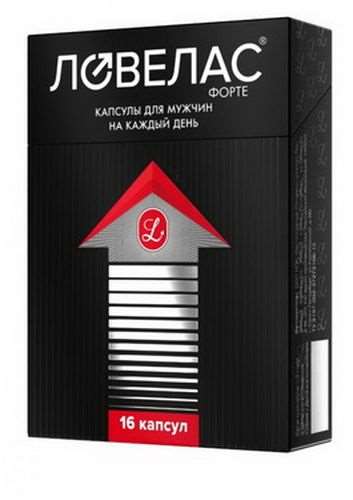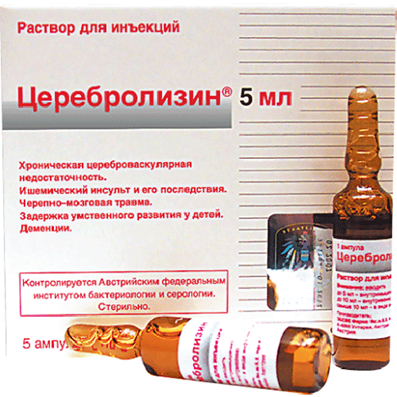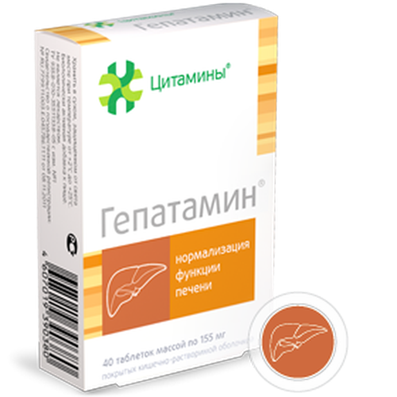Instruction for use: Etamsylate
I want this, give me price
Trade name of the drug – Dicynone, Etamsylate, Etamsylate-Ferein, Etamzilate-Åskom
The Latin name of the substance Etamsylate
Etamsylatum (genus. Etamsylati)
Chemical name
2,5-Dihydroxybenzenesulfonic acid with diethylamine
Gross formula
C10H17NO5S
Pharmacological groups:
Coagulants (including coagulation factors), hemostatics
Angioprotectors and microcirculatory correctors
The nosological classification (ICD-10)
D68.0 Von Willebrand's Disease: Von Willebrand's Disease; Villebrand-Jurgens disease; Angiogemophilia; Willebrand-Jurgens constitutional thrombopathy; Willebrand-Jurgens syndrome
D68.9 Violation of coagulation, unspecified: Multiple bleeding; Violation of blood clotting; Reduced blood clotting; Coagulopathies acquired
D69.1 Qualitative platelet defects: Bernard-Soulier syndrome; Thrombocytopathy; May-Hegglina anomalies
D69.3 Idiopathic Thrombocytopenic Purpura: Werlhof's Disease; Idiopathic autoimmune thrombocytopenia; Idiopathic thrombocytopenic purpura of adults; Idiopathic thrombocytopenic purpura in adults; Immune idiopathic thrombocytopenic purpura; Immune thrombocytopenia; Bleeding in patients with thrombocytopenic purpura; Evans Syndrome; Thrombocytopenic purpura; Thrombocytopenia of immune origin; Chronic idiopathic thrombocytopenic purpura; Essential thrombocytopenia; Autoimmune thrombocytopenic purpura in pregnancy; Posttransfusion purpura
D69.9 Hemorrhagic condition, unspecified: Diathesis, hemorrhagic (familial); Hemorrhagic diathesis; Hemorrhagic complications; Hemorrhagic conditions; Hemorrhagic diathesis; Hemorrhagic syndrome; Disease of internal organs with hemorrhagic syndrome
H35.6 Retinal hemorrhage: Hemorrhagic retinopathy; Hemorrhage in the retina; Hemorrhage in the retina of the eye; Repeated haemorrhage in the retina; Rota company; Hemorrhages in the eye; Hemorrhages in the retina at altitudes
H36.0 Diabetic retinopathy (E10-E14 + with common fourth character .3): Haemorrhagic diabetic retinopathy; Diabetic retinopathy; Macular degeneration in patients with diabetes
H44.8 Other eye diseases: Hemophthalmos; Spikes of the eye
I62.9 Intracranial hemorrhage (non-traumatic), unspecified: Intracranial hemorrhage
I77.6 Unspecified Arteritis: aortoarteriit; vasculitis; Neateroskleroticheskoe coronary arteries
I78.8 Other capillary diseases: Capillary bleeding; Capillary bleeding in dentistry; Capillary bleeding from superficial wounds; Capillary bleeding in general surgery; Bleeding capillary; Increased brittleness of blood vessels; Teleangiectasia
K92.2 Gastrointestinal bleeding, unspecified: Gastrointestinal and intestinal bleeding; Acute bleeding from the upper gastrointestinal tract; Gastric bleeding; Gastrointestinal bleeding; Intraoperative abdominal bleeding; Intestinal bleeding; Bleeding in the upper part of the digestive tract; Bleeding gastrointestinal; Bleeding from the upper gastrointestinal tract; Bleeding from the digestive tract; Bleeding intraoperative abdominal; Recurrent bleeding in the digestive tract; Diagnosis of bleeding from the small intestine; Ulcer bleeding; Mallory-Weiss syndrome; Recurrent bleeding from peptic ulcers; Bleeding gastric
N92.0 Abundant and frequent menstruation with a regular cycle: Abundant menstruation with a regular cycle
N92.1 Abundant and frequent menstruation in an irregular cycle: Metrorrhagia; Dysfunctional metrorrhagia
P52.9 Intracranial (non-traumatic) hemorrhage in fetus and newborn, unspecified
R04.0 Epistaxis: Nasal bleeding; Nasal bleeding; Epistaxis
R04.8 Bleeding from other parts of the respiratory tract
R31 Nonspecific hematuria: Hematuria; Hematuria from the lower part of the urinary system; Microhematuria; Machemuturia
R58 Bleeding, not elsewhere classified: Abdominal apoplexy; Hemorrhagia; Haemorrhage of the esophagus; Hemorrhage; Generalized bleeding; Diffuse bleeding; Diffuse bleeding; Prolonged bleeding; Blood loss; Blood loss during surgical interventions; Bleeding during surgery and in the postoperative period; Bleeding during labor; Bleeding and haemorrhage in hemophilia B; Bleeding from the gums; Bleeding intraoperative abdominal; Bleeding against a background of coumarin anticoagulants; Hepatic hepatitis; Bleeding in hemophilia A; Bleeding at hemophilia A; Bleeding with inhibitory forms of hemophilia A and B; Bleeding due to leukemia; Bleeding in patients with leukemia; Bleeding; Bleeding due to portal hypertension; Bleeding due to hyperfibrinolysis; Drug bleeding; Local bleeding; Local bleeding due to activation of fibrinolysis; Massive blood loss; Acute blood loss; Parenchymal hemorrhage; Hepatic bleeding; Postoperative hemorrhage; Kidney bleeding; Vascular-platelet hemostasis; Traumatic bleeding; Threatening bleeding; Chronic blood loss
T39.9 Poisoning by non-narcotic analgesic, antipyretic and antirheumatic drugs, unspecified
T81.0 Bleeding and hematoma complicating the procedure, not elsewhere classified: Bleeding in the postoperative period; Bleeding during transfusion; Bleeding during operations on the brain; Bleeding during surgical interventions; Bleeding after colorectal interventions; Bleeding after prostatectomy; Bleeding during surgery and in the postoperative period; Bleeding due to surgery on the prostate and urinary tract
Z01.2 Dental Examination: Extirpation of the tooth; Anesthesia of mucous membranes; Stomatological intervention
Z100 * CLASS XXII Surgical practice: Abdominal surgery; adenomectomy; Amputation; Coronary angioplasty; Angioplasty of the carotid arteries; Antiseptic skin treatment for wounds; Antiseptic Hand; Appendectomy; atherectomy; Balloon coronary angioplasty; Vaginal hysterectomy; The coronary bypass; Interventions in the vagina and cervix; Interventions on the bladder; Intervention in the mouth; Restoration and reconstructive surgery; Hand hygiene of medical personnel; Gynecologic surgery; Gynecological intervention; Gynecological surgery; Hypovolemic shock during operations; Disinfection of purulent wounds; Disinfection of wounds edges; Diagnostic intervention; Diagnostic procedures; Cervical Diathermocoagulation; Long-surgery; Replacing the fistula catheters; Infection in orthopedic surgery; Artificial heart valve; cystectomy; Short-term outpatient surgery; Short-term operation; Short surgical procedures; Krikotireotomiya; Blood loss during surgery; Bleeding during surgery and in the postoperative period; Kuldotsentez; laser photocoagulation; laser coagulation; retinal laser coagulation; Laparoscopy; Laparoscopy in Gynecology; CSF fistula; Small gynecological operations; Small surgical procedures; Mastectomy and subsequent plastic; mediastinotomy; Microsurgical operations on the ear; Mukogingivalnye operation; suturing; Minor surgery; neurosurgical operation; Immobilization of the eyeball in ophthalmic surgery; testectomy; pancreatectomy; Perikardektomiya; The period of rehabilitation after surgery; The period of convalescence after surgery; Percutaneous transluminal coronary angioplasty; Pleural thoracentesis; Pneumonia postoperative and posttraumatic; Preparation for surgical procedures; Preparation for surgery; Preparation of the surgeon's hands before surgery; Preparation of the colon for surgical procedures; Postoperative aspiration pneumonia in neurosurgical and thoracic surgery; Postoperative nausea; Postoperative bleeding; postoperative granuloma; postoperative shock; The early postoperative period; myocardial revascularization; Radiectomy; gastric Resection; bowel resection; uterine Resection; liver Resection; enterectomy; Resection of part of the stomach; Reocclusion of the operated vessel; Bonding tissues during surgical procedures; Removal of sutures; Condition after eye surgery; Condition after surgery; Condition after surgery in the nasal cavity; Condition after gastrectomy; Status after resection of the small intestine; Condition after tonsillectomy; Condition after removal of the duodenum; Condition after phlebectomy; Vascular surgery; Splenectomy; Sterilization of surgical instruments; Sterilization of surgical instruments; sternotomy; Dental surgery; Dental intervention in periodontal tissues; strumectomy; Tonsillectomy; Thoracic surgery; Thoracic surgery; total gastrectomy; Transdermal intravascular coronary angioplasty; Transurethral resection; Turbinektomiya; Removal of a tooth; cataract surgery; Removal of cysts; tonsillectomy; Removal of fibroids; Removing the mobile primary teeth; Removing polyps; Removing broken tooth; Removal of the uterus body; Removal of sutures; Fistula likvoroprovodyaschih ways; Frontoetmoidogaymorotomiya; Surgical infection; Surgical treatment of chronic limb ulcers; Surgery; The surgery in the anal area; The surgery on the colon; Surgical practice; The surgical procedure; Surgical interventions; Surgery on the gastrointestinal tract; Surgical procedures on the urinary tract; Surgical procedures on the urinary system; Surgical intervention of the genitourinary system; Surgical procedures on the heart; Surgical manipulation; surgery; Surgery on the veins; Surgical intervention; Vascular surgery; Surgical treatment of thrombosis; Surgery; cholecystectomy; Partial gastric resection; hysterectomy; Percutaneous transluminal coronary angioplasty; Percutaneous transluminal angioplasty; Coronary artery bypass; tooth Extirpation; Extirpation of milk teeth; pulpectomy; pulsative cardiopulmonary bypass; tooth Extraction; teeth Extraction; cataract extraction; Electrocoagulation; endourological intervention; episiotomy; Etmoidotomiya; Complications after tooth extraction
Z40 Preventive Surgery: Inhalational Anesthesia; Intratracheal Intubation; Intubation of the trachea; Surface anesthesia in ophthalmology
CAS Code
2624-44-4
Characteristics of the substance Etamsylate
Hemostatic agent.
White with a pinkish touch of crystalline powder. Easily soluble in water, soluble in alcohol.
Pharmacology
Mode action - Angioprotective, hemostatic.
Stimulates the formation of platelets and their exit from the bone marrow. Activates the formation of tissue thromboplastin (factor III) at the site of damage to small vessels, promotes adhesion and aggregation of platelets, reduces bleeding.
Increases the rate of formation of the primary thrombus and enhances its retraction, virtually without affecting the level of fibrinogen and PV. With repeated injections, thrombus formation is intensified.
Recovers pathologically altered bleeding time. On normal system parameters, hemostasis is not affected. Does not cause hypercoagulation, does not have vasoconstrictive effect.
Possessing anti-hyaluronidase activity and stabilizing ascorbic acid, it prevents splitting and promotes the formation in the vascular wall of mucopolysaccharides with a large molecular mass, increases the resistance of capillaries, reduces their fragility, normalizes permeability in pathological processes. Reduces the yield of fluid and diapedesis of blood elements from the vascular bed, improves microcirculation.
It is well absorbed with both in / m administration and oral administration. Evenly distributed in various organs and tissues (depending on the degree of their blood supply). Poorly binds to proteins and shaped elements of blood. Quickly excreted from the body almost unchanged, mainly through the kidneys, in small amounts - through the intestine. After 5 minutes after intravenous administration of kidneys, 20-30% of the administered amount is released, completely excreted after 4 hours.
With IV introduction, activation of hemostasis begins after 5-15 minutes, reaches a maximum after 1-2 hours, remains at a sufficient level for 4-6 hours, and, gradually weakening, stops at the end of the day; With the / m introduction, the effect develops somewhat more slowly. When administered inside, the maximum effect is observed after 2-4 hours. After the course treatment, the effect persists for 5-8 days, gradually weakening.
Application of the substance Etamsylate
Prophylaxis and stopping of bleeding: parenchymal and capillary hemorrhages, incl. Traumatic, in surgery for operations on well-vascularized organs and tissues, surgical interventions in the dental (cyst removal, granulomas, extraction of teeth, etc.), urological (prostatectomy, etc.), ophthalmologic (keratoplasty, cataract removal, antiglaucomatous surgeries and others Surgical interventions), otolaryngological practice (tonsillectomy, microsurgical operations on the ear, etc.); Intestinal, renal, pulmonary hemorrhage, metro- and menorrhagia in fibroids, secondary bleeding against thrombocytopenia and thrombocytopathy, hypocoagulation, hematuria, intracranial hemorrhage (including in newborns and premature infants), epistaxis with hypertension, drug bleeding ( If they are not caused by anticoagulants), hemorrhagic vasculitis, hemorrhagic diathesis (including Verlhof disease, Willebrand-Jurgens disease, thrombocytopathy), vascular disease with hemorrhagic syndrome, diabetic Microangiopathy (hemorrhagic diabetic retinopathy, repeated bleeding into the retina, hemophthalmus).
Contraindications
Hypersensitivity, thrombosis, thromboembolism, acute porphyria, hemoblastosis in children.
Restrictions
Hemorrhages against the background of anticoagulants.
Application of pregnancy and breastfeeding
When pregnancy is possible, if the expected effect of therapy exceeds the potential risk to the fetus (safety of etamzilate during pregnancy is not established). At the time of treatment should stop breastfeeding.
Side effects of Etamsylate
Dizziness, headache, hyperemia of the facial skin, paresthesia of the lower extremities, decreased SAD, heartburn, epigastric gravity, allergic reactions.
Interaction
Pharmaceutically incompatible (in one syringe) with other drugs. Introduction at a dose of 10 mg / kg for 1 hour before dextran (the average molecular weight of 30-40 thousand Da) prevents their anti-aggregation effect (administration after dextran does not have a haemostatic effect). The combination with aminocaproic acid, menadione sodium bisulfite is acceptable.
Routes of administration
Inside, IV, IM.
Precautions for Etamsylate
Care must be taken when prescribing patients with a history of thrombosis or thromboembolism.
When hemorrhagic complications associated with an overdose of anticoagulants, it is recommended to use specific antidotes.
Application in patients with impaired blood coagulation indexes is possible, but should be supplemented with drug management, eliminating the identified deficiency or defect factors of the coagulation system.

 Cart
Cart





